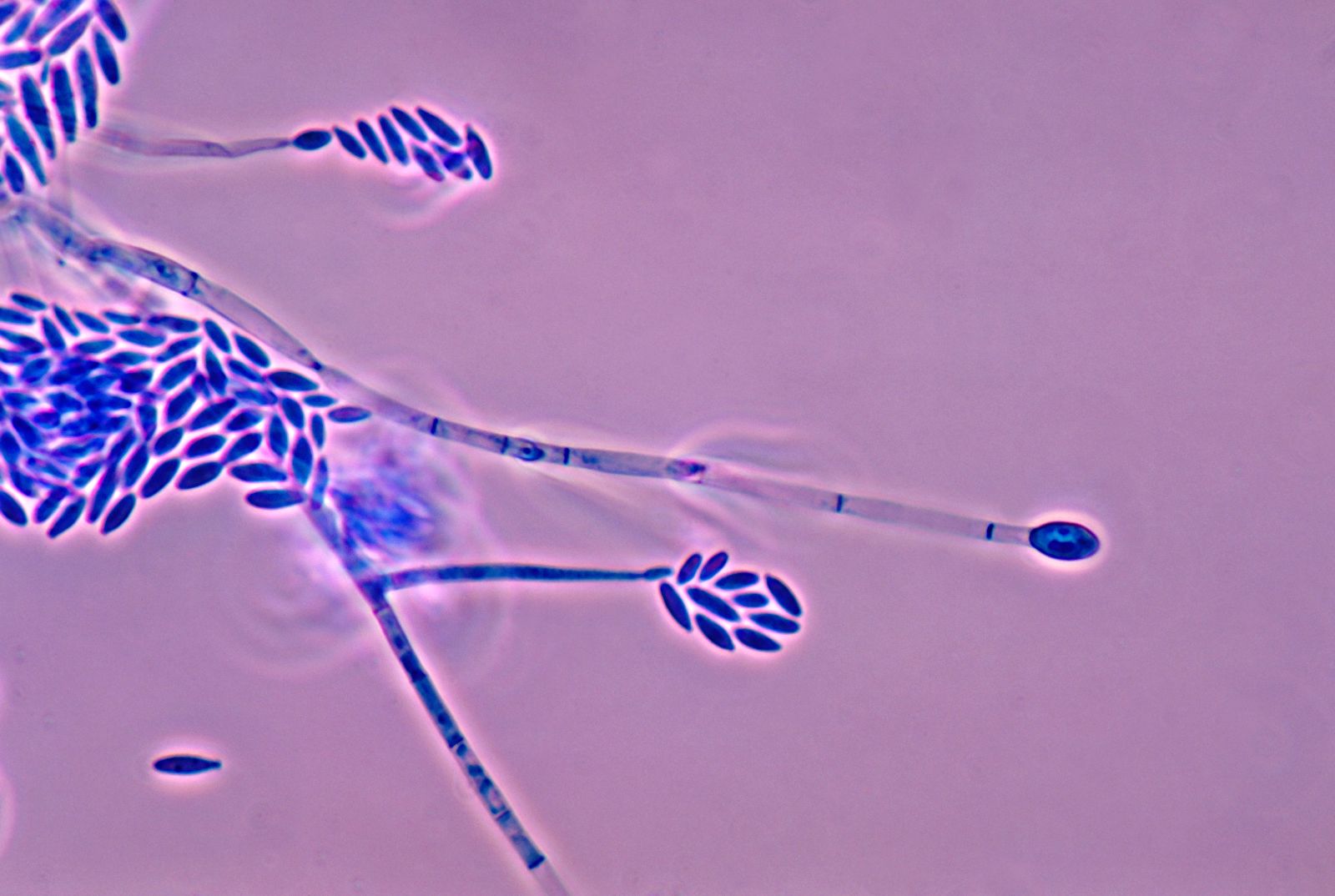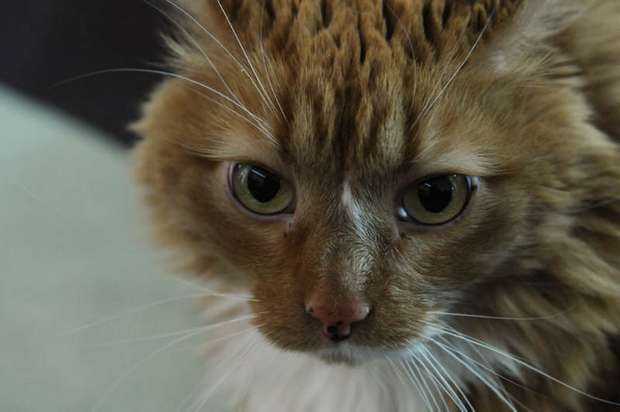A Fungus Among Us:
Molds May Cause Allergies

Molds are fungi. Fungus is a large group of organisms which are neither plant nor animal. A common fungus is the one that causes athlete’s foot and another well-known fungus is the mushroom! We are pretty sure only one of these fungi will be found on a pizza.
Included in the group fungus are molds. There are a multitude of molds that have been identified, not all of them capable of creating discomfort for your pet (or you), some molds have been harnessed to be quite useful in the making of cheese and drugs, for instance. A moldy piece of fruit has no effect on your pet and the degree of impact of mold varies from benign to causing extreme unhealthful conditions like black mold (Stachybotrys atra). At Animal Dermatology Clinic the fungus of interest are certain molds that may be the source of allergens for pets with environmental allergies.
Many pets are unaffected by molds and certainly for pair of animals in a household, one may show no symptoms of the presence of a mold, while the other displays allergic symptoms of itching and scratching.
Environment may play a part in the presence of mold since mold thrives in warm moist conditions. Animal Dermatology Clinics located in California see few mold allergic pets compared to our clinics in Indiana, Kentucky and Georgia, in part due to the higher levels and frequency of humid weather.
Like pollen, the spores of mold are microscopic, moving freely throughout the air and we are constantly exposed to them. It is a good bet that there are mold spores on you now! Molds can also be found in the ground and can be released from pets that dig.
Mold is difficult to eradicate because the spores are very resistant to many cleaners and typically require a minimum of ten minutes of saturation with a strong oxidizer such as chlorine bleach or peroxide. Lysol® or other similar phenolic compounds will work as well. Moreover, if you “see” mold, a colony has already been established and it was probably present long before that accumulation.
If the doctor suspects an allergy, an allergy skin test may be ordered to determine if the pet shows to be hypersensitive to a particular mold (in addition to pollens). Antigen injections may bring relief (70% success rate for dogs and 60% success rate for cats).
So if an allergy to mold is identified, treatments are available. If antigen injections fail to bring relief, the veterinary dermatologist may use other protocols and medications for specific treatments.
Cat Saves Owners Life Just Hours After Being Adopted

Cats are often maligned and stereotyped as well, let’s just say it’s the opposite of most dogs. The heroics of Rin Tin Tin and Old Yeller have been written about and movies made. Instead of Lassie the Wonder Collie, can you imagine an orange tabby’s response to the frantic cries of help from a hapless Timmy?
Well wonder no more, as a cat in Wisconsin is given credit for bringing attention when the owner started to seizure in her sleep.
Amy Jung and her son Ethan stopped into The Humane Society near their home in Sturgeon Bay, Wisconsin on Feb. 8 to play with the cats when an orange-and-white cat caught her eye and she ended up adopting the 21-pound feline named Pudding, along with his friend Wimsy. Jung learned that the laid-back cat had been in and out of the shelter since 2003 when she made the impulsive decision to adopt the pair.
Jung said the cats wasted no time fitting into their new home when they arrived. But hours later after going to bed, Amy Jung who has had diabetes since childhood, started having a diabetic seizure in her sleep.
That’s when Pudding sprang into action. The fast-acting feline sat on Jung’s chest in an attempt to wake her up and when that didn’t work, he nudged an nipped at her face until she briefly returned to consciousness.
In that moment, Jung was able to call out to her son Ethan, but he couldn’t hear her calls. Pudding then ran to Ethan’s room and pounced on his bed awaking Ethan and he was able to call for help.
Jung believes that she wouldn’t have made it through the night without Pudding, an opinion that her doctors share.
Since that night, Jung said, Pudding has taken to yowling at Jung’s feet when her blood sugar is dropping. She checks it every time he starts up, and without fail he has been correct. “Your body, when you’re diabetic, gives off a smell that he is reacting to,” Jung said. Pudding is now being registered as a therapy animal.
There have been a number of reports of dogs sensing impending seizures, but the same behavior in cats is much rarer, according to doctors who spoke to the BBC for a story about a cat who predicted a number of deaths at a nursing home.
No word on the actions of the other cat, Wimsy. It is believed that he continued to groom himself during the entire event then promptly took a nap.
Source: Green Bay Press Gazette

 In response to last month's Life Lessons from the Dog, we offer the following:
In response to last month's Life Lessons from the Dog, we offer the following:

